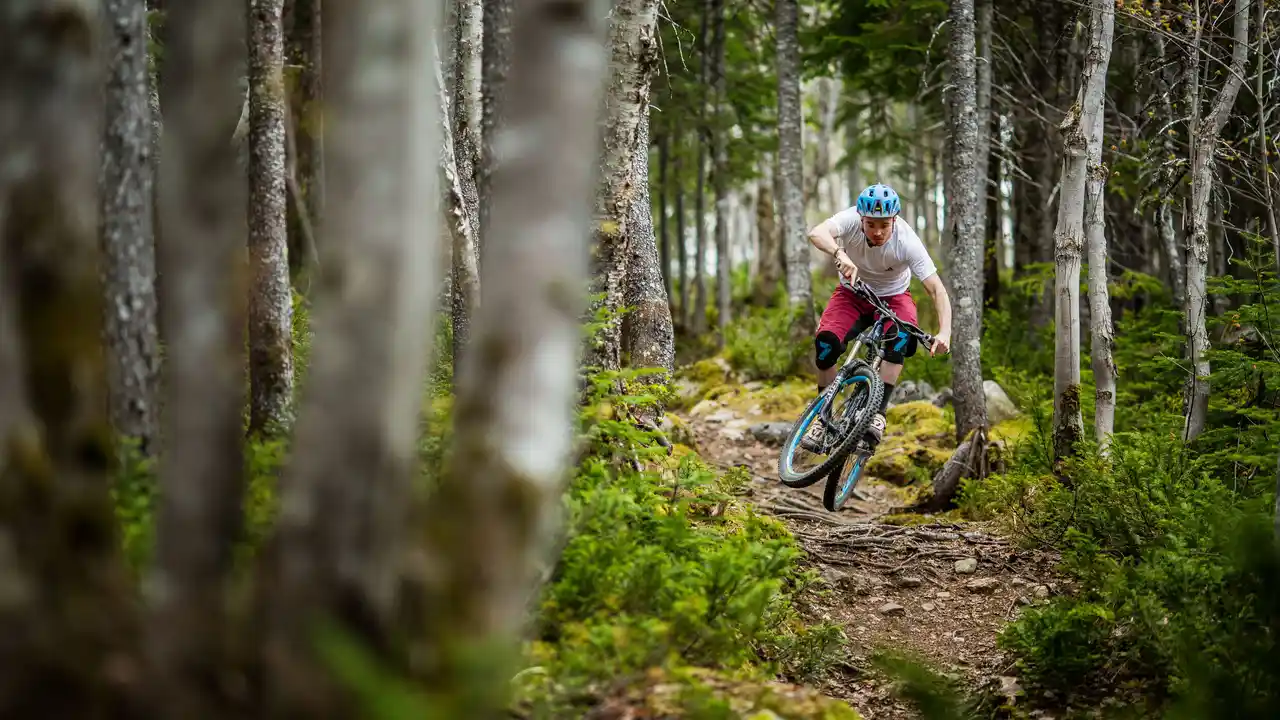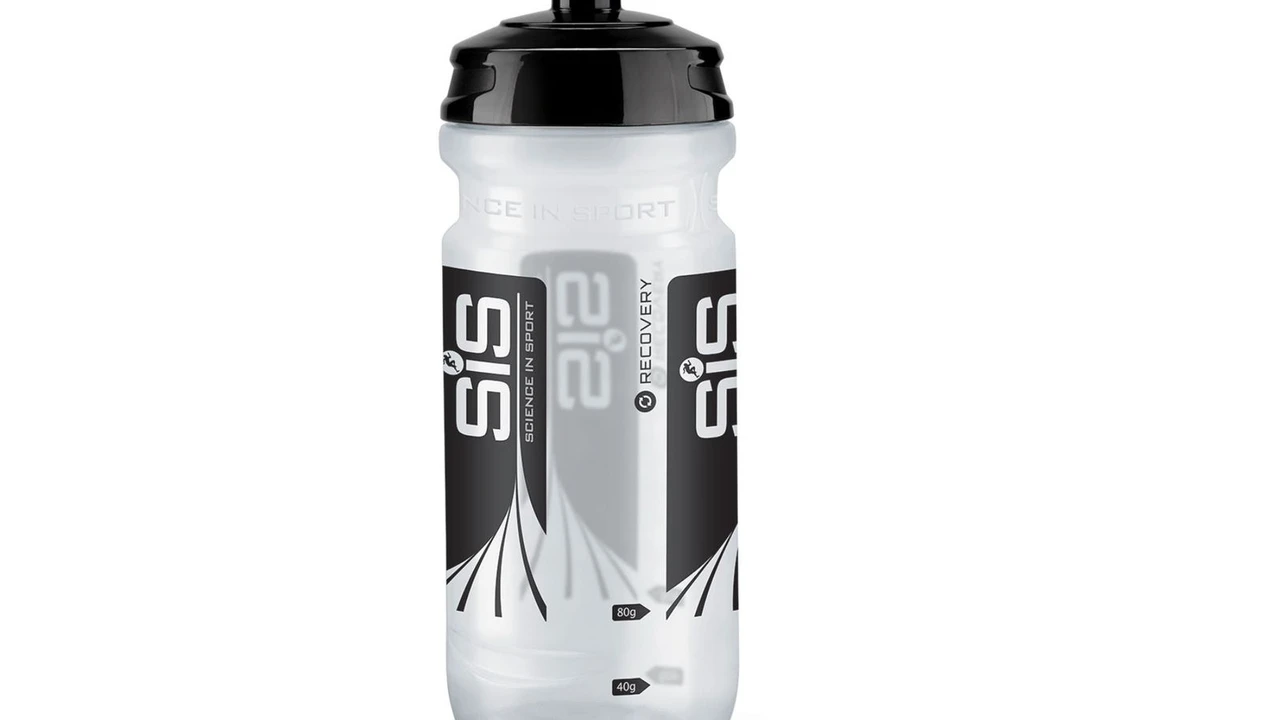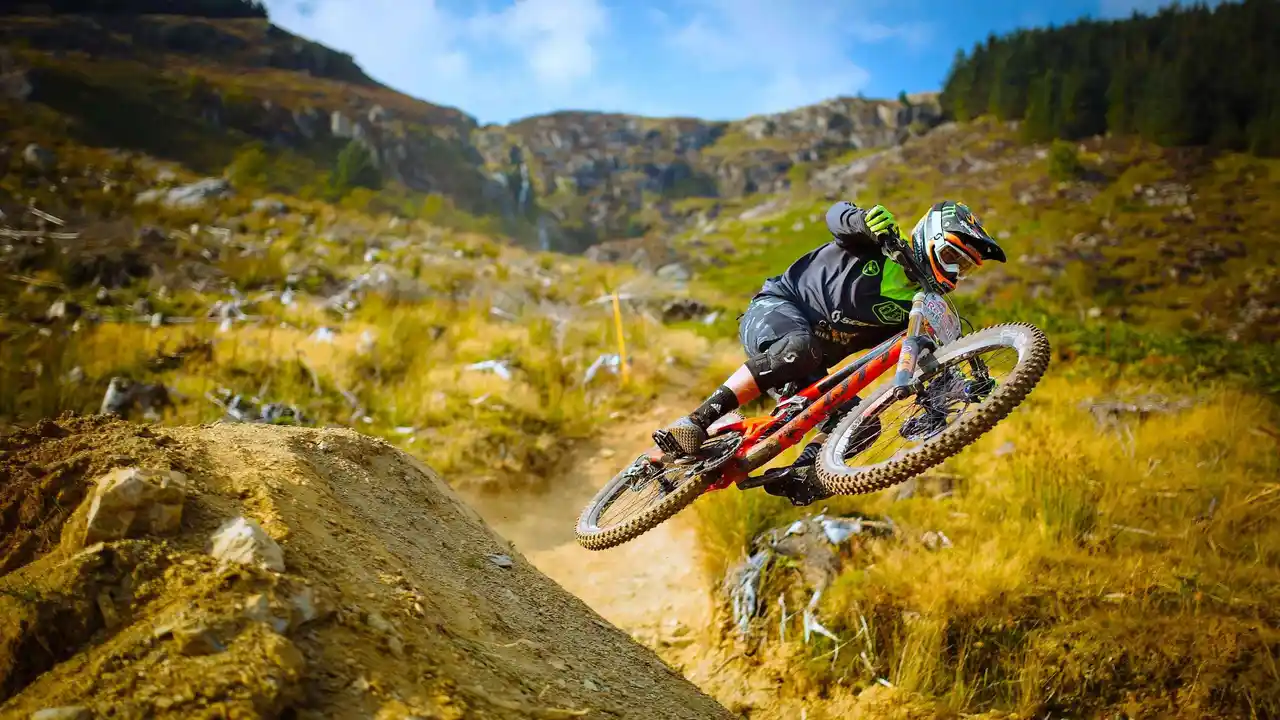5 Tips for Building a Stronger West Coast Cycling Community
Understanding the nuances of West Coast cycling culture is key to fostering a thriving community. This article dives deep into actionable strategies for strengthening local cycling groups, boosting participation, and highlighting some great gear to enhance your riding experience. From group rides to advocacy and choosing the right bike and accessories, we'll cover everything you need to know to build a vibrant and inclusive cycling scene.

So, you're passionate about cycling and want to see your local West Coast scene flourish? Awesome! Building a strong cycling community takes effort, but it's incredibly rewarding. It's about more than just riding; it's about creating a supportive, inclusive, and fun environment for everyone who loves bikes. Let's get into some practical tips!
Tip 1: Organize Regular Group Rides and Events for West Coast Cyclists
Group rides are the lifeblood of any cycling community. They provide a chance for people to connect, socialize, and of course, ride! But not all group rides are created equal. To attract a diverse group of riders, offer a variety of rides with different distances, paces, and skill levels. Think about:
- Beginner-friendly rides: Short, flat routes with plenty of breaks. Emphasize fun and learning over speed.
- Intermediate rides: Longer distances with some hills. A good option for riders who want a bit of a challenge.
- Advanced rides: Fast-paced rides with significant elevation gain. These are for experienced riders who want a serious workout.
- Themed rides: Coffee rides, brewery rides, sunset rides, holiday-themed rides – get creative!
Make sure to clearly communicate the ride details, including the route, distance, pace, and any specific requirements (e.g., helmet, lights, spare tube). Use social media, local cycling shops, and online forums to promote your rides. Consider partnering with local businesses to offer discounts or post-ride refreshments.
Beyond regular rides, organize special events like:
- Bike maintenance workshops: Teach basic bike repair skills, such as changing a flat tire, adjusting brakes, and cleaning the drivetrain.
- Skills clinics: Focus on specific riding techniques, such as cornering, climbing, and descending.
- Social gatherings: Host potlucks, barbecues, or movie nights to foster camaraderie.
- Charity rides: Raise money for a local cause while promoting cycling.
Remember to always prioritize safety. Ensure that all riders are aware of traffic laws and safe riding practices. Consider having a designated ride leader who can provide guidance and support.
Tip 2: Advocate for Cycling Infrastructure and Safety on the West Coast
A strong cycling community needs safe and accessible infrastructure. Advocate for bike lanes, protected bike paths, and improved signage in your area. Get involved in local politics and attend city council meetings to voice your concerns. Join or support cycling advocacy groups that are working to improve cycling conditions.
Here are some ways to advocate for better cycling infrastructure:
- Write letters to your elected officials: Express your support for cycling infrastructure projects and urge them to prioritize cycling in transportation planning.
- Attend city council meetings: Speak during public comment periods and share your experiences as a cyclist.
- Organize group rides to highlight problem areas: Show elected officials firsthand the challenges that cyclists face.
- Support cycling advocacy groups: Donate your time or money to organizations that are working to improve cycling conditions.
- Educate drivers about sharing the road: Promote awareness of cycling laws and safe driving practices around cyclists.
Safety is paramount. Work with local authorities to improve road safety for cyclists. This could involve:
- Increasing enforcement of traffic laws: Hold drivers accountable for reckless driving that endangers cyclists.
- Improving visibility: Install better lighting at intersections and crosswalks.
- Educating cyclists about safe riding practices: Promote the use of helmets, lights, and reflective clothing.
Tip 3: Foster Inclusivity and Diversity within the West Coast Cycling Community
Cycling should be for everyone, regardless of their age, gender, race, socioeconomic status, or ability. Make a conscious effort to create a welcoming and inclusive environment for all cyclists. Consider:
- Offering rides for different skill levels: Ensure that there are options for beginners and experienced riders alike.
- Providing adaptive cycling equipment: Make cycling accessible to people with disabilities.
- Reaching out to underrepresented groups: Partner with community organizations to promote cycling to diverse populations.
- Creating a safe and respectful environment: Promote a culture of respect and discourage discrimination of any kind.
Actively recruit new members from diverse backgrounds. Offer scholarships or financial assistance to help cover the cost of equipment or membership fees. Organize events that are specifically targeted at underrepresented groups. Create a mentorship program to pair experienced cyclists with new riders from diverse backgrounds.
Promote positive role models within the cycling community. Highlight the achievements of cyclists from diverse backgrounds. Share their stories and experiences to inspire others.
Tip 4: Partner with Local Bike Shops and Businesses on the West Coast
Local bike shops are essential resources for cyclists. Partner with them to promote your community events, offer discounts to members, and provide technical support. Consider:
- Hosting events at bike shops: Organize bike maintenance workshops, skills clinics, or social gatherings at local bike shops.
- Offering discounts to community members: Partner with bike shops to offer discounts on equipment, repairs, and accessories.
- Promoting bike shops on your website and social media: Give them a shout-out and encourage your members to support them.
Reach out to other local businesses that cater to cyclists, such as coffee shops, restaurants, and breweries. Offer discounts to community members or partner with them to host events. This can help to create a vibrant and supportive ecosystem for cycling.
Tip 5: Utilize Social Media and Online Platforms to Connect West Coast Cyclists
Social media is a powerful tool for connecting with cyclists and promoting your community. Use platforms like Facebook, Instagram, and Twitter to share information about upcoming events, promote cycling advocacy efforts, and connect with other cyclists.
Here are some tips for using social media effectively:
- Create a dedicated Facebook group or page: This will provide a central hub for communication and information sharing.
- Use relevant hashtags: This will help people find your content when they are searching for cycling-related information.
- Share engaging content: Post photos and videos of your rides, events, and members.
- Respond to comments and questions promptly: Show that you are engaged and responsive to your community.
- Use social media to promote cycling advocacy efforts: Share information about upcoming city council meetings or cycling advocacy campaigns.
Consider creating a website or blog to share more in-depth information about your community. This could include:
- A calendar of events: Make it easy for people to find out about upcoming rides, workshops, and social gatherings.
- A directory of local bike shops and businesses: Provide a list of resources for cyclists in your area.
- Articles and blog posts about cycling: Share tips, advice, and stories about cycling in your community.
- A forum or message board: Create a space for cyclists to connect and discuss cycling-related topics.
Gear Recommendations for West Coast Cycling Adventures
Let's talk gear! The West Coast offers diverse riding conditions, so having the right equipment is crucial. Here are a few recommendations, covering different categories and price points.
Road Bikes for West Coast Climbs and Descents
Road bikes are ideal for paved roads and challenging climbs. The West Coast offers plenty of both! When choosing a road bike, consider the following:
- Frame material: Carbon fiber is lightweight and offers excellent vibration damping, but it's more expensive than aluminum. Aluminum is a more affordable option that's still durable and responsive.
- Groupset: Shimano, SRAM, and Campagnolo are the leading manufacturers of groupsets. Consider the number of gears, the shifting performance, and the overall durability.
- Brakes: Disc brakes offer superior stopping power, especially in wet conditions. Rim brakes are a more traditional option that's lighter and more affordable.
Recommended Road Bikes:
- Specialized Tarmac SL7 (High-End - $5,000+): A lightweight and aerodynamic road bike that's perfect for climbing and descending. Features a carbon fiber frame, Shimano Dura-Ace groupset, and disc brakes. Ideal for serious riders looking for top performance.
- Trek Domane AL 5 (Mid-Range - $2,000-$3,000): A comfortable and versatile road bike that's perfect for long rides. Features an aluminum frame, Shimano 105 groupset, and disc brakes. A great all-around option for recreational riders.
- Giant Contend 3 (Entry-Level - Under $1,000): A budget-friendly road bike that's perfect for beginners. Features an aluminum frame, Shimano Claris groupset, and rim brakes. An affordable way to get into road cycling.
Usage Scenario: These bikes are fantastic for tackling the iconic climbs of the West Coast, like Mount Tamalpais in California or Cypress Mountain in British Columbia. They're also great for long road rides along the Pacific Coast Highway.
Mountain Bikes for West Coast Trails
The West Coast is a mountain biking paradise, with trails ranging from flowy singletrack to technical downhill runs. When choosing a mountain bike, consider the following:
- Suspension: Full suspension bikes offer more comfort and control on rough terrain, but they're more expensive and require more maintenance than hardtail bikes. Hardtail bikes are a more affordable option that's still capable on many trails.
- Wheel size: 29-inch wheels roll over obstacles more easily and provide more stability, while 27.5-inch wheels are more nimble and playful.
- Travel: The amount of suspension travel you need will depend on the type of trails you plan to ride. More travel is better for technical downhill runs, while less travel is better for cross-country riding.
Recommended Mountain Bikes:
- Santa Cruz Hightower (High-End - $5,000+): A versatile trail bike that's capable on a wide range of terrain. Features a carbon fiber frame, 140mm of travel, and 29-inch wheels. A great choice for riders who want a bike that can do it all.
- Trek Roscoe 7 (Mid-Range - $1,500-$2,000): A hardtail mountain bike that's perfect for beginner to intermediate riders. Features an aluminum frame, 120mm of travel, and 27.5-inch wheels. A fun and affordable option for exploring local trails.
- Specialized Rockhopper (Entry-Level - Under $1,000): A budget-friendly hardtail mountain bike that's perfect for getting started in mountain biking. Features an aluminum frame, 80mm of travel, and 29-inch wheels. A great value for the money.
Usage Scenario: These bikes are perfect for exploring the legendary trails of the Pacific Northwest, such as Whistler Bike Park in British Columbia or the Downieville Downhill in California. They're also great for riding local trails in your area.
Gravel Bikes for West Coast Adventures
Gravel bikes are designed for riding on unpaved roads and trails. They're a great option for exploring the backroads of the West Coast and tackling long-distance adventures. When choosing a gravel bike, consider the following:
- Frame material: Carbon fiber is lightweight and offers excellent vibration damping, but it's more expensive than aluminum. Aluminum is a more affordable option that's still durable and responsive.
- Tire clearance: Gravel bikes need to have enough tire clearance to accommodate wide tires, which provide more traction and comfort on rough surfaces.
- Mounts: Look for bikes with plenty of mounts for racks, fenders, and water bottles.
Recommended Gravel Bikes:
- Cervelo Aspero (High-End - $4,000+): A fast and responsive gravel bike that's perfect for racing and long-distance adventures. Features a carbon fiber frame, Shimano GRX groupset, and plenty of tire clearance.
- Giant Revolt Advanced 2 (Mid-Range - $2,000-$3,000): A versatile gravel bike that's comfortable and capable on a wide range of terrain. Features a carbon fiber frame, Shimano GRX groupset, and plenty of mounts.
- Cannondale Topstone 4 (Entry-Level - Under $1,500): A budget-friendly gravel bike that's perfect for exploring local gravel roads. Features an aluminum frame, Shimano Claris groupset, and plenty of tire clearance.
Usage Scenario: These bikes are ideal for exploring the scenic gravel roads of the West Coast, such as the Lost Coast in California or the Olympic Peninsula in Washington. They're also great for bikepacking adventures.
Essential Accessories for West Coast Cyclists
Beyond the bike itself, there are a few essential accessories that every West Coast cyclist should have:
- Helmet: A helmet is the most important piece of safety gear. Choose a helmet that fits properly and meets safety standards. Brands like Giro, Bell, and POC offer a wide range of options, from lightweight road helmets to more protective mountain bike helmets. Price range: $50 - $300+.
- Cycling shorts: Padded cycling shorts will make your ride much more comfortable, especially on long distances. Look for shorts with a chamois pad that's designed for your gender and riding style. Brands like Pearl Izumi, Castelli, and Assos are known for their quality cycling shorts. Price range: $50 - $200+.
- Cycling jersey: A cycling jersey will help you stay cool and dry by wicking away sweat. Look for jerseys with breathable fabrics and features like rear pockets for storing snacks and essentials. Brands like Rapha, MAAP, and Specialized offer stylish and functional cycling jerseys. Price range: $75 - $250+.
- Cycling shoes and pedals: Clipless cycling shoes and pedals will improve your pedaling efficiency and power transfer. Choose a system that's compatible with your bike and riding style. Shimano, Look, and Crankbrothers are the leading manufacturers of cycling shoes and pedals. Price range: $100 - $400+.
- Sunglasses: Sunglasses will protect your eyes from the sun, wind, and debris. Look for sunglasses with interchangeable lenses that are suitable for different lighting conditions. Brands like Oakley, Smith, and Rudy Project offer high-quality cycling sunglasses. Price range: $100 - $300+.
- Bike computer: A bike computer will track your speed, distance, time, and other data. This can be helpful for monitoring your progress and planning your rides. Garmin and Wahoo are the leading manufacturers of bike computers. Price range: $100 - $500+.
- Lights: Front and rear lights are essential for riding in low-light conditions. Choose lights that are bright enough to be seen by other road users. Brands like Lezyne, Cygolite, and Blackburn offer a wide range of cycling lights. Price range: $30 - $150+.
- Water bottles and cages: Staying hydrated is essential for cycling. Carry water bottles and cages on your bike to ensure that you have enough water for your rides. CamelBak and Elite are popular brands for water bottles and cages. Price range: $10 - $50+.
- Repair kit: A repair kit will allow you to fix minor mechanical problems on the road. Include a spare tube, tire levers, a multi-tool, and a pump or CO2 inflator. Topeak and Park Tool offer comprehensive repair kits. Price range: $30 - $100+.
Choosing the right gear can significantly enhance your cycling experience on the West Coast. Consider your riding style, budget, and the types of terrain you plan to tackle when making your purchasing decisions. And don't forget to support your local bike shops!
:max_bytes(150000):strip_icc()/277019-baked-pork-chops-with-cream-of-mushroom-soup-DDMFS-beauty-4x3-BG-7505-5762b731cf30447d9cbbbbbf387beafa.jpg)






